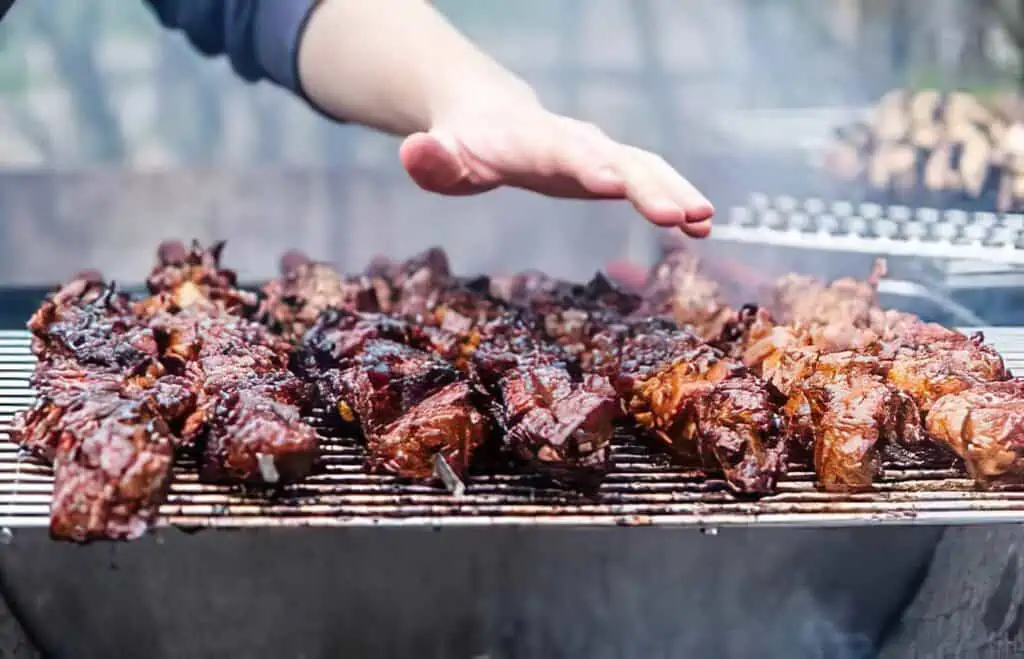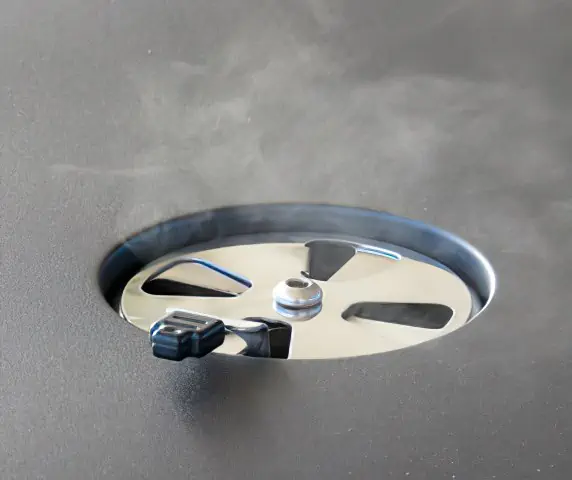The distinct and unique flavor and cooking that you get from grilling is one of the reasons why it is a highly popular staple in almost every household. You can expect something barbecued whenever there are outdoor (and even indoor) gatherings and everyone cannot wait to bite into that juicy, smoky goodness of grilled meat.
One of the secrets to achieving that delicious cook or sear in whatever protein you plan on putting on that open flame is of course, the temperature of your grill. Anyone who has cooked a piece of meat knows that there are certain temperatures that fit each protein best to yield that rich, scrumptious taste.
Knowing and understanding grill heat levels is one of the key techniques that anyone who has an interest in barbecuing has to have in order to consistently dole out the good food. It is important to know that you cannot grill accurately unless you know the cooking temp that your ingredient requires.
It does seem daunting to think about getting these temperature settings down to a tee. In truth, most seasoned and well-experienced barbecue chefs will tell you that it took them a whole lot of trial and error just to perfectly gauge the cooking temp that yields the best result. You can probably take comfort in this fact since nobody will expect you to become an expert on grill temperatures overnight.
Still, it will not hurt for you to start getting more in tune with your grill’s temperature as well as your protein’s cooking temp. The trick is actually knowing the basics and then you can start experimenting and doing some trial and error with different staples that you want to serve on your next barbecue party.
Do not feel overwhelmed or pressured. Here are a few general tips and some great tricks when it comes to getting familiar with your grill heat levels.
3 DIFFERENT GRILL HEAT LEVELS
In general, there are three different heat levels when it comes to cooking on a grill. Keep in mind though that a heat level is no necessarily the be all and end all of cooking meat. However, it is apparent that each is best suited for cooking different types of protein.
Low Heat
Low temperature or low grill heat is usually somewhere between 325° to 375° Fahrenheit. This is the sweet medium level which creates enough warmth to brown the outside of your proteins while still managing to cook the insides to its proper cooking temperature. It is surely a satisfying way to grill chicken, turkey, sausages as well as some roasts. Low heat also provides you the best setting if you want to try your hand at smoking some meat. Use this grill heat level for briskets, ribs, pork shoulder and even the whole pig, lamb or goat.
Medium Heat
The medium level for your grill’s heat is 375° to 450° Fahrenheit and is the best temp for you to cook hamburgers, vegetables and some fish. If you want your proteins to cook slower and make sure that the middle parts reach the proper internal cooking temp, then this heat level is the way to go. You can manage to create the same sear effect on the meat’s exterior so you will not miss this.
- Medium–Low Heat (275° to 300° Fahrenheit) – This is the best for indirect grilling and true barbecue. You will want to steadily cook your pork ribs and pork shoulder in this level.
- Medium-High Heat (375° to 400° Fahrenheit) – This grill heat level is best for direct grilling, indirect grilling and smoke roasting. If you have plans on cooking a whole fish or bird as well as roast some pork loins along with some large vegetables like cauliflower, cabbage or onions then stay at this level.
High Heat
This grill heat level is usually around 450° to 650° Fahrenheit. When your grill reaches the mid part of this heat level, around 500° Fahrenheit, it will create the right sizzle when the meat is placed on your grill grate. You will definitely see those yummy grill marks. High heat is mostly used when preparing steaks, fish steaks, pork chops, chicken breasts, pizza etc… You can also grill vegetables and fruits in this heat level. High heat is also best for direct grilling.
Incendiary Heat
This level of grill heat is estimated around 650° Fahrenheit and higher. It’s like extreme barbecue or what you might also call infrared grilling. If you want to perfectly sear your steaks and chops then go at this level for direct grilling.

How to Check Your Grill’s Temperature
It is important that you know how to check your grill’s temperature properly. Some chefs and well-experienced barbecue cooks may have developed that instinct of knowing just how hot their grills are with just the feel of their hands but, since you need years of cooking experience for that kind of technique, you might want to settle to reading this guideline and practicing until you get the hang of it.
In checking your grill’s temperature, you have to think of the temperature in the cook chamber and the temperature at the grate level. Yes, these two will matter significantly when you have a style of grilling that you want to achieve. The heat in the cook chamber is what you check if you want to do indirect grilling, smoking or smoke-roasting while the heat in the grate level is what you need to determine when you are going for direct grilling.
Here are some easy and trusted tips that you can try in order to check your grill’s temperature.
- Thermometer – You can actually buy a thermometer that can be point and shot at one of the bars of the grill grate so you can check its heat level. This is probably one of the easiest and most accurate way to check grill heat levels without any fuss.
- Hand Technique – You can hold your hand at least, 3 inches above the grate over the zone or place that you plan on grilling and then start counting. This will give you a sense of heat. In general, you will be able to hold your hand over the hot grill for 2 to 3 seconds, counting numbers with the word “Mississippi” in between. If the grill is at a medium heat level, you can hold out your hand up to 5 or 6 seconds. For low heat grill, you can probably go from 10 to 12 seconds.
Most grills also come with a thermometer built into the lid and this will help you tell the heat level of your grill about 6 to 10 inches above the grate. However, you still have to check the grill grates’ heat level since it does not show on the built-in thermometer.
How to Control Your Grill’s Temperature
It is also important to get the hang of keeping your grill’s heat level in control while cooking. You need to be able to adjust your temperature accordingly as you cook along.
There are 3 easy methods that you can try and practice to help you bring your temperature up or down when you need them to.

- Adjusting the Vents – The grill has built in vents that help in controlling the airflow of your grill. If you want your grill temperature to go higher, you have to let in more oxygen by opening the top and bottom vents to make your coals burn more and produce higher heat. If you want to lower the grill temp then close the top vent so that the oxygen is reduced.
- Adjusting the Coals – When you are grilling using coals or briquettes, their position in the grill will determine the level of your temperature. Usually when the coals are clumped together, it will produce a higher heat output. To lower, you can spread out your briquettes.
- Adjust the Racks – You can also adjust the height of your grill grate or rack to gauge just how much heat you want your protein to be cooking in. Just be careful and make sure to use the proper tools for safety and avoid burning your skin.
Conclusion
In conclusion, there is no reason for you to be afraid or daunted when it comes to grill heat levels. As long as you have the proper knowledge and understanding about it, you will soon be able to use your grill at ease and be a pro in the long run.
It is important that you keep practicing and following the recipes properly while adjusting according to your preference in tase and in cook. Do not worry too much if you burn a few steaks or undercook a couple of chicken. Practice will help make you better!
Happy grilling!
Hi, I’m Adam and I’m a HUGE fan of Food and Cooking.
Do you enjoy grilling sessions with your family while staring at the beautiful fire pit flames?
Flame Gorilla is the site to learn how to have that perfect backyard experience.

